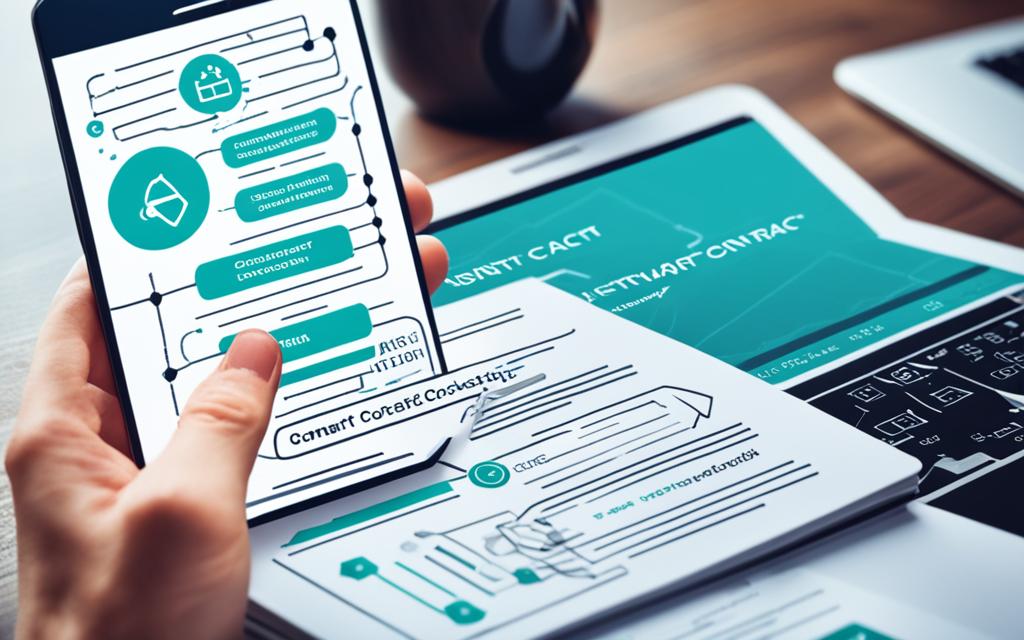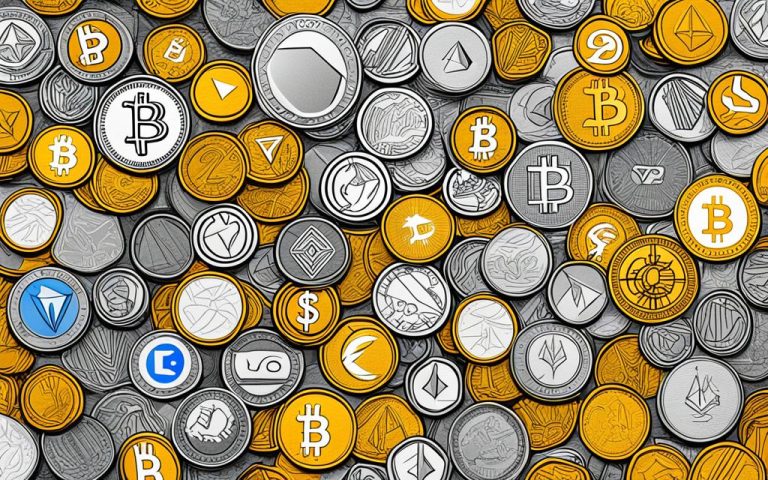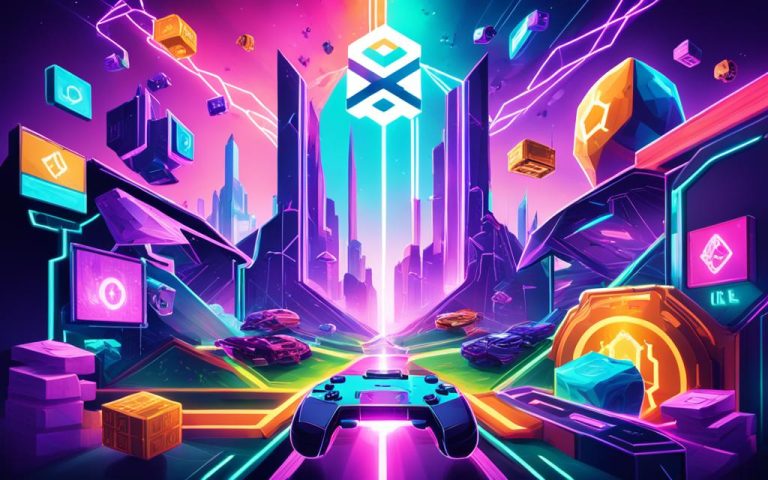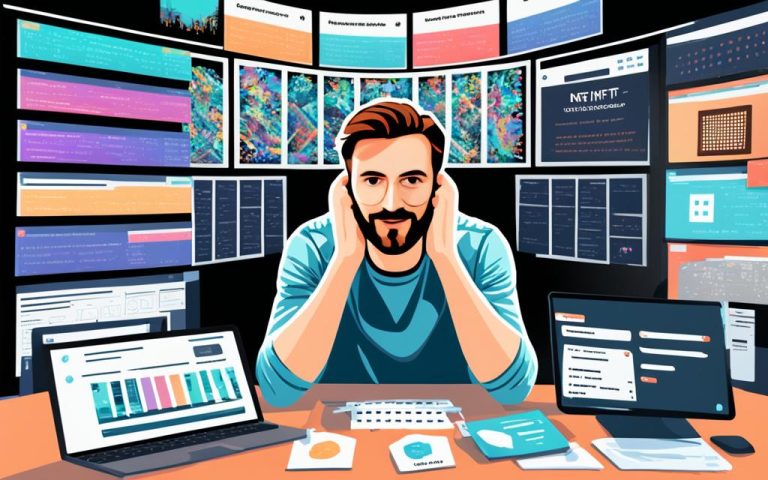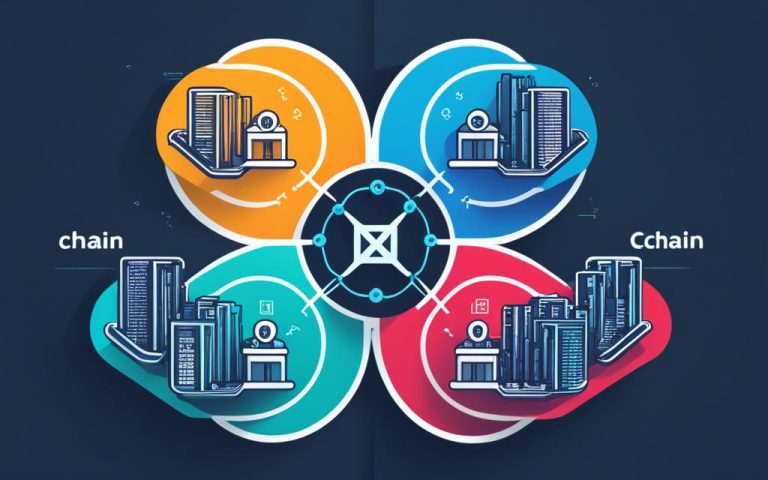Blockchain is changing the world with its ledger technology. This tech records and checks transactions in a new way. It’s popular because it brings trust, safety, and efficiency to many areas.
Blockchain is a shared database across many computers or nodes. This setup means everyone sees the same transaction history. It’s safe from changes. For more info, see IBM’s Blockchain page.
Cryptocurrencies like Bitcoin and Ethereum show blockchain’s power in finance. Anyone can join these public networks. They are fully open. Learn more at Blockchain Reporter.
But blockchain goes beyond just money. Companies use it to get better security and efficiency. They choose networks that control who can join and see transactions. Discover this at Investopedia’s Blockchain page.
Consortium blockchains let groups manage a blockchain together. They help in many fields, like keeping track of seafood, securing money, improving health, and building trust between stores and suppliers.
Blockchain has big potential but struggles with handling lots of transactions. Also, making cryptocurrency uses a lot of power.
Since 2009, blockchain has been tied to new ideas like DeFi, NFTs, and smart contracts. The Bitcoin network keeps running strong. Check Blockchain Reporter for more on its power.
Since 1991, blockchain has reshaped many industries. It offers new chances for trust and openness. With blockchain, everyone can see transactions clearly. It’s changing the digital world big time.
How Does a Blockchain Work?
A blockchain is a groundbreaking tech that uses a decentralized network. It stores information in blocks linked through cryptography. Let’s look at how this system works.
Blockchain Structure
Each blockchain is made up of interconnected blocks. These blocks include data like transactions, secured through encryption.
Transactions on the Blockchain
Blockchains mainly handle transactions. When a transaction happens, it needs to go through steps before getting added to a block.
First, the transaction is stored in a place called the mempool. Here, it waits until it’s ready to join a block.
Miners and Proof-of-Work
Miners make sure the blockchain data is real and secure. They add new blocks by solving complex math puzzles in a process called proof-of-work.
This process looks for a special, cryptographic hash. It takes a lot of computer power. The first miner to solve it earns cryptocurrency.
Validation and Confirmation
After solving a proof-of-work puzzle, the miner closes the block. Then the transaction is complete. But, there’s an extra step for security.
Usually, five more blocks must join the blockchain to validate the transaction. This system confirms the transaction’s security and permanence.
This way of making, checking, and confirming blocks secures a blockchain’s integrity. It makes transactions direct, clear, and unchangeable.
By learning how blockchains work, we see their huge potential in many sectors. They could change how we make transactions or manage supply chains in our digital world.
Decentralization and Security in Blockchain
Blockchain is all about spreading out control. It shifts power from one main place to many locations. This makes data handling transparent and trustworthy.
Everyone in the network has the same data. Thus, all transactions are open for viewing. This setup ensures everyone acts fairly and records remain unchanged.
Transparency and certainty are its big wins. It’s perfect for keeping records straight in critical fields.
Blockchain’s safety comes from cryptography and rewards. Spreading out its network lowers the chance of big failures. Plus, it makes the system run smoother and more consistently.
Big blockchains like Bitcoin and Ethereum are super secure. A 51% attack, where someone takes over, is pretty much impossible. But, smaller blockchains might be at risk.
FAQ
What is a blockchain?
A blockchain is a shared database or ledger. It exists across a network of computers or nodes.
What is the role of blockchain?
Blockchain securely records transactions in a decentralized way. It’s not just for cryptocurrencies but has other uses too.
How does blockchain ensure data immutability?
Blockchain makes sure data cannot be changed. This is true for any sector.
How does blockchain reduce the need for trusted third parties?
Trust is mainly needed when data is initially put in. This lessens reliance on third parties.
What are the applications of blockchain?
Blockchain is used in digital currencies, DeFi, NFTs, and smart contracts. It’s very versatile.
How does blockchain store data?
Blockchain keeps data in blocks. These are secured together using cryptography.
What types of information can be stored on a blockchain?
Blockchains store many kinds of info, especially transactions. That’s their main use.
What is the process of a transaction on a blockchain?
A transaction begins in a memory pool. Then, it’s added to a blockchain block.
How do miners contribute to the blockchain process?
Miners propose blocks by solving math challenges. This is known as proof-of-work.
When is a blockchain transaction considered complete?
A transaction finishes once a block closes. It then needs five other blocks to confirm it, ensuring security.
What does the decentralized nature of blockchain provide?
The decentralized setup of blockchain stops data from being changed by any one node. This makes it secure.
How does blockchain enhance transparency?
Anyone can view blockchain transactions. This openness boosts transparency.
What is the basis of blockchain security?
Blockchain’s security comes from cryptography and economic rewards. This combination is very effective.
Are all blockchains equally secure?
Smaller blockchains might be at risk. Yet, big ones like Bitcoin and Ethereum are far more secure because attacking them requires massive computing efforts.

